Photographs: Reuters
The Prime Minister's Economic Advisory Council on Monday projected the economic growth in the country at 8.6 per cent for the current fiscal on the back of rebound in farm output and inflation to come down to 7 per cent by March-end due to declining food prices.
The PMEAC, in its 'Review of the Economy 2010-11' report, also said the country's GDP is likely to grow by 9 per cent in 2011-12, back to the high rate it had witnessed before onset of the global economic recession.
PMEAC's projection of 8.6 per cent growth is in line with government estimates released earlier this month.
According to PMEAC, the agriculture sector is expected to grow at 5.4 per cent this fiscal.
This is higher than the 0.4 per cent rate of growth registered by the farm sector in 2009-10.
"Agriculture will do very well this year. We might have record harvest of wheat," PMEAC chairman C Rangarajan said.
. . .
PM's advisors gung-ho on growth, curbing inflation
Photographs: Reuters
The council also said the services and industry sectors would maintain the high growth rate of last few years.
While services sector is expected to register a growth rate of 9.6 per cent, industry is projected to grow by 8.1 per cent.
During the last fiscal, services sector had witnessed a growth of 9.1 per cent, while manufacturing had grown by 8.8 per cent.
The PMEAC further said the overall inflation is expected to be at 7 per cent by March-end and that the rate of price rise in the case of manufactured goods has been low.
"The declining trend in food prices, particularly that of the vegetables, will result in lower food inflation... considerable care from the policy side has to be taken to ensure that the manufactured goods inflation remains below 5 per cent in 2011-12," it said.
The overall inflation for January has been at 8.23 per cent, while food inflation was at 11.05 per cent in the first week of February.
. . .
PM's advisors gung-ho on growth, curbing inflation
Photographs: Reuters
Following are the highlights of the report:
- Economy expected to grow at 8.6 per cent in 2010-11 and 9.0 % in 2011-12
- Agriculture expected to grow at 5.4% in 2010-11 and 3.0% in 2011-12.
- Industry expected to grow at 8.1% in 2010-11 and 9.2% in 2011-12.
- Services expected to grow at 9.6% in 2010-11 and 10.3% in 2011-12.
- Inflation rate projected at 7.0 % by March 2011.
- Slow recovery in global economic and financial situation.
- Rising domestic savings and investment chief engines of growth.
- Investment rate expected to be 37.0% in 2010-11 and 37.5% in 2011-12.
. . .
PM's advisors gung-ho on growth, curbing inflation
Photographs: Reuters
- Domestic savings rate expected to be over 34% in 2010-11 and 34.7% in 2011-12.
- Current Account deficit estimated at 3.0% of GDP in 2010-11 and 2.8% of GDP in 2011-12.
- Merchandise trade deficit projected to be $ 132.0 billion or 7.7% of the GDP in 2010-11 and $151.5 billion or 7.7% of GDP in 2011-12.
- Invisibles trade surplus projected to be $ 81.3 billion or 4.8% of the GDP in 2010-11 and $95.7 billion or 4.8% in 2011-12.
- Capital flows can be readily absorbed by financing needs of the high growth of the Indian economy.
- Against the level of $47.8 billion in 2009-10, the capital inflows projected to be $ 64.6 billion for 2010-11 and $76 billion for 2011-12.
- Against accretion to reserves of $13.4 billion in 2009-10, projected to be $12.1 billion in 2010-11 and $20.2 billion in 2011-12.
- The declining trend in food prices particularly that of the vegetables will result in lower food inflation.
. . .
PM's advisors gung-ho on growth, curbing inflation
Photographs: Reuters
- Manufactured goods inflation has remained low. Considerable care from the policy side has however to be taken to ensure that the manufactured goods inflation remains below 5 per cent in 2011-12.
- Monetary Policy to complete the process of exit and operate with bias toward tightening.
- Liquidity conditions are taut enough for monetary policy signals to be appropriately transmitted to the financial sector.
- Monetary and fiscal policies have to be appropriately tight to protect the economy from inflation.
- Monetary policy has an important role to play even in situations where inflation is triggered by supply constraints.
- Current year fiscal adjustment may not be a problem, the challenge is of adhering to the Finance Commission's targets with credible expenditure management.
. . .
PM's advisors gung-ho on growth, curbing inflation
Photographs: Reuters
- Total central revenues registering an increase of 62.9 per cent in (April-Dec) 2010-11 over the corresponding period last year.
- Capital expenditure registered a sharp increase of 64.6 per cent (April-Dec) in 2010-11.
- Fiscal deficit outcome for 2010-11 could be marginally better than the budget estimates.
- The consolidated fiscal deficit is likely to be 7.5 to 8 per cent of GDP for 2010-11.
- There is considerable urgency in the implementation of goods and services tax (GST).
- Budgeted level of fiscal deficit and revenue deficit still beyond comfort zone.
. . .
PM's advisors gung-ho on growth, curbing inflation
Photographs: Reuters
- To sustain a growth rate of 9.0 per cent, steps required are:
- Containing inflation by focusing both on monetary and fiscal policies and supply side management.
- The pace of infrastructure creation has to be stepped up with renewed focus on the power sector.
- Continue efforts to contain Current Account Deficit (CAD) at 2-2.5 per cent of GDP and in parallel encourage flow of external investments into the country.
- Greater attention to agriculture, including on seed development, management of water and soil fertility and improving delivery system.

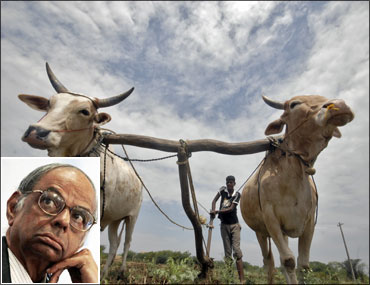

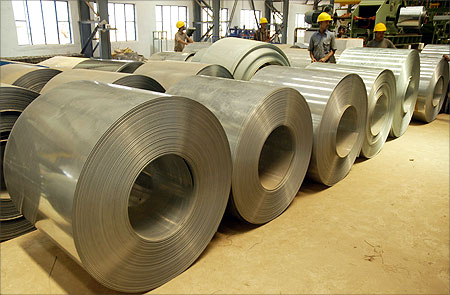
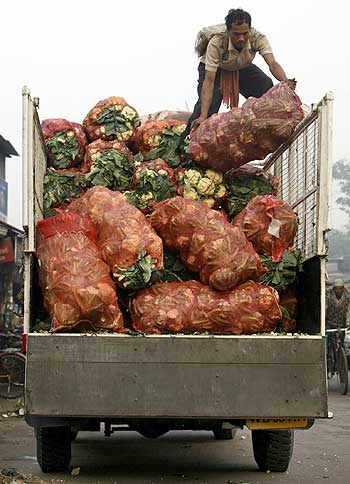
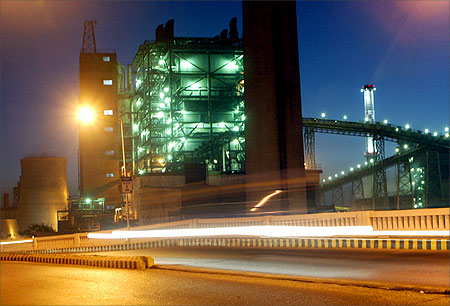
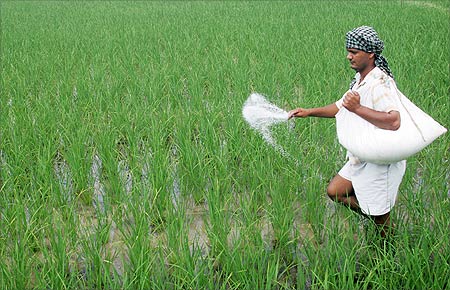


article